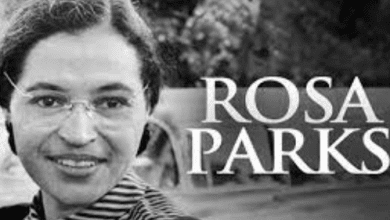February
Parinirvana Day In Mahayana 2024
Mahayana's Parinirvana Day: Embracing Liberation and Compassion
Explore the essence of Mahayana Buddhism’s Parinirvana Day and how it teaches us to embrace both liberation and compassion in our lives.
Read also:
Quick Facts:
- Date: February 15th
- Main Components: Meditation, readings, offerings, pilgrimage
- Popularity: Celebrated by Mahayana Buddhists in East Asia, Vietnam, the Philippines, and some Western countries
- Pairings: Parinirvana Day is linked to Wesak, which celebrates the Buddha’s birth and enlightenment
- Variations: Different traditions may have different rituals and interpretations of the Buddha’s parinirvana
Introduction
What is Parinirvana Day?
- Parinirvana Day is a Mahayana Buddhist holiday that commemorates the day when the Buddha achieved parinirvana, or complete nirvana, upon the death of his physical body.
- Parinirvana Day is also known as Nirvana Day or Nirvana Anniversary.
- Parinirvana Day is a time to reflect on the Buddha’s teachings, life, and death, and to express gratitude and reverence for his wisdom and compassion.
- What are the main themes and teachings of Parinirvana Day?
- Parinirvana Day celebrates the eternal, blissful, self, and pure nature of the Buddha and nirvana, as revealed in the Mahayana Mahaparinirvana Sutra.
- Parinirvana Day also affirms the buddha-nature of all beings, and the possibility of liberation for anyone, even those who lack the seed of enlightenment.
- Parinirvana Day also reminds Buddhists of the impermanence of all conditioned things, and the importance of practicing diligently for one’s own liberation and the benefit of others.
- What are the sources and versions of Parinirvana Day?
- The origin and date of Parinirvana Day are uncertain, but it may have been influenced by the Chinese tradition of honoring ancestors on their death anniversaries.
- The date of Parinirvana Day varies among different traditions. Some observe it on February 8th, while most observe it on February 15th. In Bhutan, it is celebrated on the fifteenth day of the fourth month of the Bhutanese calendar.
- The main source of Parinirvana Day is the Mahayana Mahaparinirvana Sutra, which is a scripture that recounts the Buddha’s final days and teachings before his parinirvana. There are also Pali parallels in the Pali Mahaparinibbana Sutta (DN 16) and the Nibbana Sutta (SN 6.15).
Related: John Frum Day In Vanuatu 2023
The Buddha’s Parinirvana
What is parinirvana?
- Parinirvana is the final nirvana of a buddha or an arhat after death.
- Parinirvana is the cessation of all suffering and rebirth, and the ultimate state of peace and happiness.
- Parinirvana is beyond human imagination and description, and can only be realized by direct experience.
- What are the events and details of the Buddha’s parinirvana?
- The Buddha’s parinirvana took place at Kushinagar (Kusinara) in India, when he was 80 years old.
- The Buddha’s parinirvana was preceded by his last meal offering by Cunda, a smith, who gave him a dish of pork or mushrooms (the exact food is disputed). The Buddha became ill after eating the food, but he did not blame Cunda. Instead, he praised him for his generosity and predicted that he would attain enlightenment in a future life.
- The Buddha’s parinirvana was accompanied by his final instructions to his disciples. He urged them to uphold and propagate his teachings, to be self-reliant and diligent in their practice, to avoid disputes and schisms, and to respect their elders and teachers. He also declared that he had taught everything that was necessary for liberation, and that he had no secrets or hidden teachings.
- The Buddha’s parinirvana was followed by his funeral rites and relics distribution. His body was cremated by his disciples at a place called Ramabhar Stupa (Mukutbandhan-Chaitya). His relics were divided into eight portions and distributed among eight clans or kingdoms who claimed them. Later, his relics were further divided and enshrined in various stupas (relic mounds) across India and other countries.
- What are the accounts and differences of the Buddha’s parinirvana in various sources?
- The Pali account of the Buddha’s parinirvana emphasizes the impermanence and non-self of all phenomena, including the Buddha. It describes the Buddha’s parinirvana as the complete cessation of the five aggregates (khandha) or the constituents of existence. It also warns against attachment and grief for the Buddha, and encourages detachment and equanimity.
- The Mahayana account of the Buddha’s parinirvana affirms the eternality and self of the Buddha and nirvana. It describes the Buddha’s parinirvana as the revelation of his true nature, which is the dharmakaya (body of truth) that pervades all realms and beings. It also praises the Buddha’s compassion and skillful means, and encourages devotion and faith in him.
- The Mahayana account of the Buddha’s parinirvana also adds more dialogues and incidents, such as the Buddha’s prediction of Maitreya, his future successor, his revelation of his previous lives and buddhahood, his encounter with a non-Buddhist ascetic named Subhadra, who became his last disciple, etc.
Related: Union Day In Myanmar 2023
Eternal Buddha
What is the eternal Buddha?
- The eternal Buddha is the true nature of the Buddha that transcends birth and death, samsara and nirvana, form and emptiness.
- The eternal Buddha is the dharmakaya (body of truth) of the Buddha that pervades all realms and beings.
- The eternal Buddha is the tathagata (thus-gone one) or tathagatagarbha (thus-gone womb) of the Buddha that is hidden within all beings.
- What are the attributes and expressions of the eternal Buddha?
- The eternal Buddha has four attributes: eternality, bliss, self, and purity. These attributes are opposite to the characteristics of samsara, which are impermanence, suffering, non-self, and impurity.
- The eternal Buddha expresses himself in three bodies: dharmakaya, sambhogakaya (body of enjoyment), and nirmanakaya (body of transformation). The dharmakaya is his essence, the sambhogakaya is his manifestation to bodhisattvas (beings who aspire to buddhahood), and the nirmanakaya is his manifestation to ordinary beings.
- The eternal Buddha manifests himself in various forms, such as Shakyamuni, Amitabha, Vairocana, etc. These forms are called buddhas or tathagatas, and they represent different aspects or qualities of the eternal Buddha.
- What are the sources and references of the eternal Buddha in various scriptures?
- The Mahaparinirvana Sutra is the main source of the doctrine of the eternal Buddha. It is one of the most influential texts of Mahayana Buddhism, especially in East Asia.
- Other scriptures that support or elaborate on this doctrine include:
- Lankavatara Sutra: a sutra that teaches tathagatagarbha as the essence of mind
- Tathagatagarbha Sutra: a sutra that teaches tathagatagarbha as a jewel within a dirty garment
- Avadāna-śataka: a collection of stories that illustrate tathagatagarbha as a hidden treasure
Nirvana after Death
What is nirvana after death?
- Nirvana after death is the state or condition of a buddha or an arhat after death.
- Nirvana after death is the ultimate goal or destination of Buddhist practice.
- Nirvana after death is the reality or truth that surpasses all concepts and words.
- What are the views and debates on nirvana after death in various schools?
- Theravada: nirvana after death is the complete cessation of the five aggregates (khandha) or the constituents of existence. This view is based on the Pali Mahaparinibbana Sutta (DN 16) and the Nibbana Sutta (SN 6.15).
- Sarvāstivādins: nirvana after death is the remainderless (nir-upadhiśeṣa) nirvana, as opposed to the nirvana with remainder (sa-up ādisesa) in life. This view is based on their interpretation of some passages in the Pali canon and their own Abhidharma literature.
- Mahayana: nirvana after death is the realization of the true nature of reality, which is emptiness and dependent origination. This view is based on the Mahayana Mahaparinirvana Sutra and other sutras that teach the doctrine of emptiness, such as the Prajnaparamita Sutras and the Madhyamaka Sutras.
- The Mahayana view of nirvana after death is not a negation or annihilation of existence, but a transcendence of all dualities and limitations. It is also not a static or isolated state, but a dynamic and compassionate activity that benefits all beings.
The Mahaparinirvana Sutra in History and Culture
What is the provenance and transmission of the Mahaparinirvana Sutra?
- The origin and date of the Mahaparinirvana Sutra are uncertain, but it may have been composed in India between the 2nd and 5th centuries CE.
- The sutra was translated into Chinese and Tibetan by various translators, such as Dharmakshema, Faxian, Yijing, etc.
- The sutra was transmitted and preserved in various countries, such as China, Japan, Korea, Vietnam, etc.
- What is the impact and influence of the Mahaparinirvana Sutra on Buddhist thought and practice?
- The sutra influenced many Mahayana Buddhist schools and doctrines, such as Tathagatagarbha, Pure Land, Zen, etc.
- The sutra inspired many Buddhist art and literature works, such as paintings, sculptures, poems, stories, etc.
- The sutra motivated many Buddhist activities and observances, such as pilgrimage, recitation, meditation, etc.
- What are some examples and cases of the Mahaparinirvana Sutra in history and culture?
- The Ajanta Caves in India contain paintings of scenes from the sutra.
- The Parinirvana Shrine in Bettiah, Bihar, India marks the site where Dharmakshema translated the sutra.
- The Parinirvana Day is a festival that commemorates the Buddha’s parinirvana on February 15th in some countries.
- The Rampurva lion capital in Patna Museum, Bihar, India is a relic from Ashoka’s pillar that depicts a scene from the sutra.
- The Victoria and Albert Museum in London, UK has a sculpture of the Buddha’s parinirvana from Sri Lanka.
PARINIRVANA DAY IN MAHAYANA WISHES, QUOTES, AND MESSAGES
TOP 20 PARINIRVANA DAY IN MAHAYANA WISHES AND GREETINGS
Here are 20 unique wishes and greetings for Parinirvana Day In Mahayana :
- On this sacred Parinirvana Day, may you find peace and enlightenment, just as the Buddha did.
- Wishing you a serene and reflective Parinirvana Day, where you may deepen your spiritual journey.
- May the light of wisdom guide your path on this Parinirvana Day and always.
- On this Mahayana Parinirvana Day, may your compassion and kindness continue to grow, just as the Buddha’s did.
- Sending you warm wishes for a Parinirvana Day filled with inner peace and self-realization.
- May your heart be as pure and boundless as the Buddha’s heart on this Parinirvana Day.
- On this special day, may the teachings of the Buddha inspire and illuminate your life.
- Wishing you a Parinirvana Day filled with mindfulness, compassion, and self-discovery.
- May the eternal wisdom of the Buddha shine upon you this Parinirvana Day and always.
- As we remember the Buddha’s Parinirvana, may you find tranquility and contentment within yourself.
- May the blessings of the Three Jewels guide you on the path of enlightenment this Parinirvana Day.
- On this auspicious day, may you transcend suffering and find the true meaning of liberation.
- Wishing you a Parinirvana Day full of inner peace and the realization of your true self.
- May your heart be a haven of compassion and your mind a reservoir of wisdom on this Mahayana Parinirvana Day.
- As you commemorate Parinirvana Day, may your journey toward enlightenment be filled with clarity and insight.
- May the teachings of Mahayana Buddhism continue to illuminate your path this Parinirvana Day and beyond.
- On this sacred day, may you be free from all attachments and find the ultimate peace that the Buddha attained.
- Wishing you a Parinirvana Day where you experience the profound stillness and tranquility of the enlightened mind.
- May the blessings of Mahayana Buddhism shower upon you, bringing you wisdom, compassion, and enlightenment on this Parinirvana Day.
- On this special day, may you be inspired to walk the path of self-realization, just as the Buddha did on his journey to Parinirvana.
TOP 20 PARINIRVANA DAY IN MAHAYANA QUOTES
Here are 20 unique quotes for Parinirvana Day In Mahayana:
- “On Parinirvana Day, we remember that the ultimate goal is not just to exist but to transcend and attain enlightenment.”
- “The Buddha’s Parinirvana reminds us that the journey of life is a path towards inner liberation.”
- “In the silence of Parinirvana, we find the wisdom of non-attachment and the bliss of true freedom.”
- “Parinirvana is not an end but a beginning, a reminder of the boundless potential within us.”
- “As we reflect on Parinirvana Day, may we strive to be a lamp unto ourselves, just as the Buddha advised.”
- “The light of Parinirvana continues to shine in the hearts of those who seek the path of awakening.”
- “On this Mahayana Parinirvana Day, let us honor the Buddha’s compassionate journey toward liberation.”
- “Parinirvana is the final surrender to the universal truth that all things are impermanent.”
- “The essence of Parinirvana lies in the cessation of suffering and the realization of our innate Buddha nature.”
- “As we commemorate Parinirvana, let us remember that enlightenment is not a distant goal but a present reality.”
- “Parinirvana is the culmination of the Buddha’s teachings, a reminder that the path of compassion leads to ultimate freedom.”
- “The eternal wisdom of Parinirvana reveals the profound truth that liberation is possible for all beings.”
- “May the tranquility of Parinirvana Day inspire us to cultivate peace within ourselves and the world.”
- “The Buddha’s Parinirvana is a testament to the impermanence of life and the permanence of enlightenment.”
- “On this sacred day, may we be like a lotus rising above the muddied waters of samsara, just as the Buddha did.”
- “Parinirvana is the ultimate letting go, the final step in the journey of self-discovery.”
- “In the light of Parinirvana, we find the wisdom to let go of attachments and embrace the path of liberation.”
- “Parinirvana is the doorway to ultimate peace, where the self merges with the boundless universal consciousness.”
- “The teachings of Mahayana Buddhism remind us that Parinirvana is not the end, but a return to our original nature.”
- “On this Parinirvana Day, let us seek to awaken the same compassion and wisdom that led the Buddha to his ultimate liberation.”
TOP 20 PARINIRVANA DAY IN MAHAYANA MESSAGES/SMS
Here are 20 unique messages for Parinirvana Day In Mahayana:
- “On this Parinirvana Day, may the profound wisdom of Mahayana Buddhism guide you on your journey to inner peace and enlightenment.”
- “As we commemorate Parinirvana Day, let us remember that the path to liberation is a path of compassion and self-discovery.”
- “Parinirvana is a reminder that our true nature is beyond birth and death; may this day inspire you to realize your own Buddha nature.”
- “May the teachings of Mahayana Buddhism illuminate your path on this Parinirvana Day and lead you to a state of boundless peace.”
- “Wishing you a Parinirvana Day filled with reflection and contemplation, as you walk the path of liberation with a compassionate heart.”
- “On this special day, let the light of Parinirvana guide you towards the eternal truth of impermanence and the everlasting wisdom of the Dharma.”
- “May Parinirvana Day inspire you to cultivate a heart as vast as the universe and a mind as clear as the endless sky.”
- “As we remember the Buddha’s Parinirvana, may you find solace in the teachings and wisdom that continue to shape our lives.”
- “Let the serenity of Parinirvana Day be a reminder that the journey to enlightenment is the most precious and transformative path.”
- “On this Parinirvana Day, may you experience the profound stillness that comes from letting go and embracing the true nature of existence.”
- “Parinirvana reminds us that the path to awakening is open to all, regardless of our background or circumstances. May you be inspired by this universal truth.”
- “As we honor Parinirvana Day, may the compassion and wisdom of the Buddha inspire us to lead a life of purpose and meaning.”
- “On this Mahayana Parinirvana Day, may you realize that your potential for enlightenment is as boundless as the universe itself.”
- “Parinirvana Day is a time to reflect on the impermanence of all things and to seek the unchanging truth within.”
- “May the teachings of Mahayana Buddhism continue to be a source of strength and guidance on your spiritual journey, especially on this Parinirvana Day.”
- “Parinirvana is a profound reminder that our true essence transcends the limitations of this world. May you find inner peace and freedom today.”
- “As you commemorate Parinirvana Day, may you be filled with the wisdom and compassion that are at the heart of the Buddha’s enlightenment.”
- “On this special day, may you realize that Parinirvana is not an end but a return to the eternal source of all life and wisdom.”
- “May Parinirvana Day be a time of self-discovery and awakening, as you strive to embody the qualities of a true Bodhisattva.”
- “On this Parinirvana Day, may the legacy of the Buddha’s enlightenment continue to inspire us all to walk the path of liberation and compassion.”
Conclusion
- Parinirvana Day is a Mahayana Buddhist holiday that celebrates the Buddha’s final nirvana and his eternal nature.
- Parinirvana Day is based on the Mahayana Mahaparinirvana Sutra, which is one of the most influential texts of Mahayana Buddhism.
- Parinirvana Day is a time to reflect on the Buddha’s teachings, life, and death, and to express gratitude and reverence for his wisdom and compassion.
- Parinirvana Day is also a time to affirm one’s own buddha-nature and potential for liberation, and to practice diligently for one’s own benefit and the benefit of others.



